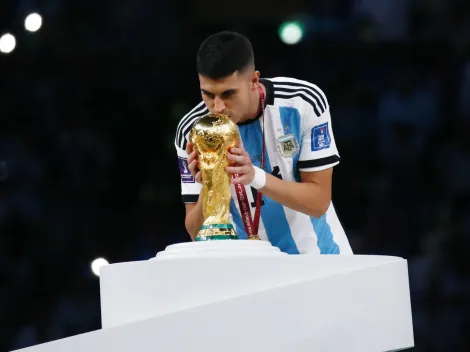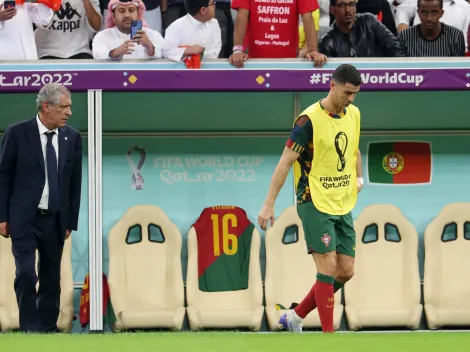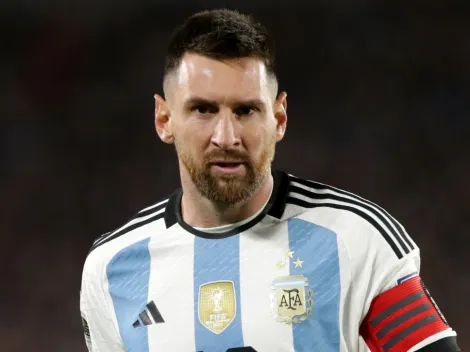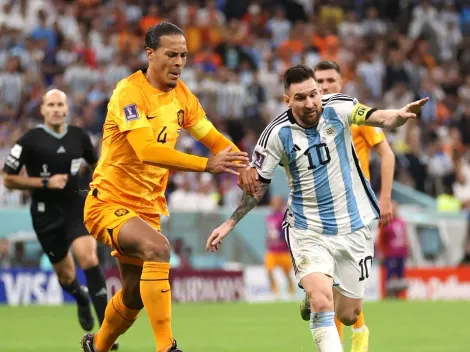The great fairy tale that is the FIFA World Cup includes fantastic, pleasant and memorable passages, such as several of those that Qatar 2022 will surely deliver, but also some dark, sad and nostalgic ones, such as the one this story will tell.
In the minds of World Cup fans, the names of Edison Arantes de Nascimento Pelé, Bobby Charlton, Diego Maradona, Franz Beckenbauer, and Zinedine Zidane, among others, will live forever in the minds of soccer fans, who increased their soccer legend thanks to the feats they achieved in this tournament.
However, there are other great players who, despite belonging to the elite of their respective eras, were never able to bring their brilliance to the FIFA World Cup. Here are the 30 stars who were never able to play in a World Cup.
30.Ryan Giggs – Wales
A man who only wore two jerseys in a 24-year career, that of Manchester United and the Wales National Team. With the Red Devils he won absolutely everything and became a legend. However, with his country it was the opposite and he was never able to enjoy success, such as playing in a World Cup. As coach he took Wales to Qatar 2022 but legal problems forced him to resign, so his dream is still unfulfilled.

Ryan Giggs, Wales. (Getty Images)
29.Alberto Spencer – Ecuador / Uruguay
An epochal striker recognized by the IFFHS in 2004 as the 20th South America Player of the Century, who shone with the club Peñarol. He had the particularity of playing for the National Team of Ecuador and also for Uruguay; he even alternated between the two in the sixties and early seventies. However, Ecuador played its first World Cup until 2002 and with Uruguay he was not considered for England 1966, the only one to which he could have been called up for the period in which he wore the shirt of the Garra Charrúa.

Alberto Spencer, Ecuador. (Evening Standard/Hulton Archive/Getty Images)
28. Abedi Pele – Ghana
His real name is Abedi Ayew and he was awarded three consecutive years as the best African footballer in the world in the 1990s. At club level, he touched the firmament when he was part of Olympique Marseille that won the Champions League in 1993, the only French team to achieve it so far. Unfortunately, he lived in a time when Ghana could only dream of qualifying for a World Cup, a dream that was only achieved in 2006.

Abedi Pele, Ghana. (Gary M. Prior/ALLSPORT)
27. Ladislao Kubala – Hungary / Spain / Czechoslovakia
Hungarian by birth, FC Barcelona legend and with an extraordinary career in soccer. He embodies a curious case in the history of this sport, as he played for three National Teams, Czechoslovakia, Hungary and Spain. Curiously, he played the least for his native country. He could have participated in the 1962 World Cup in Chile, but was unable to be capped due to an injury.

Ladislao Kubala, Hungary. (Allsport/Getty Images)
26. Bill Foulkes – England
A true Manchester United legend. He was part of the vintage team known as the Busby Babes, the lads who gave the Red Devils their first great shine, including their first Champions League (European Cup at the time). He also survived the plane crash that the team suffered in February 1958. With England he played only 1 match, in 1954, at only 21 years of age. If he had been considered by Alf Ramsey, he could have been part of the historic 1966 World Cup winning squad.
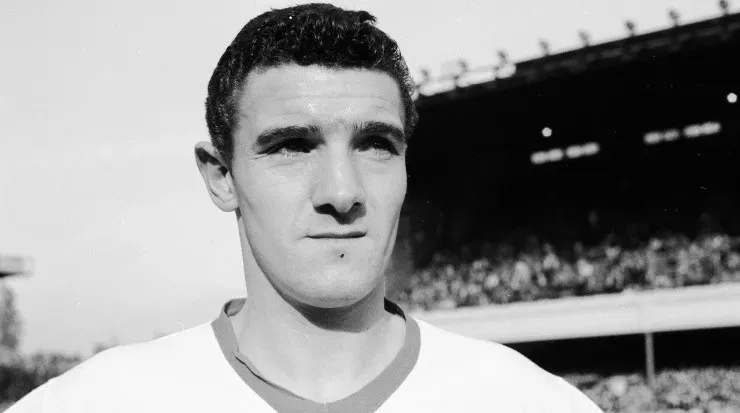
Bill Foulkes, England. (Terry Disney/Central Press/Getty Images)
25. Wael Gomaa – Egypt
He was a benchmark for the Egyptian national team with which he played more than 100 games. However, despite having won the African Cups of 2006, 2008 and 2010, he lived through a period in which it was impossible for his country to qualify for a FIFA World Cup: after participating in Italy 1990, the Pharaohs returned to the great tournament until Russia 2018.

Wael Gomaa, Egypt. (Claudio Villa/Getty Images)
24. Andrei Arshavin – Russia
He had the misfortune to shine brightly at the time when Russia National Team did not play a single World Cup, i.e. in Germany 2006 and South Africa 2010. He was not called up for Korea-Japan 2002 and Brazil 2014 where he was very young and already a veteran, respectively. However, he gave his fans a memorable Euro 2008 and very pleasing moments at club level, especially with Arsenal.

Andrei Arshavin, Russia. (Julian Finney/Getty Images)
23. Ahmed Hassan – Egypt
To understand the importance of Ahmed Hassan as a player of the Egyptian National Team, it is enough to point out that he is the fourth player with the most appearances in his country’s jersey, with 184. Multi-award winner of the African Cup, he never knew what it was like to play in a FIFA World Cup, which he unsuccessfully tried to qualify for in 1998, 2002, 2006 and 2010.
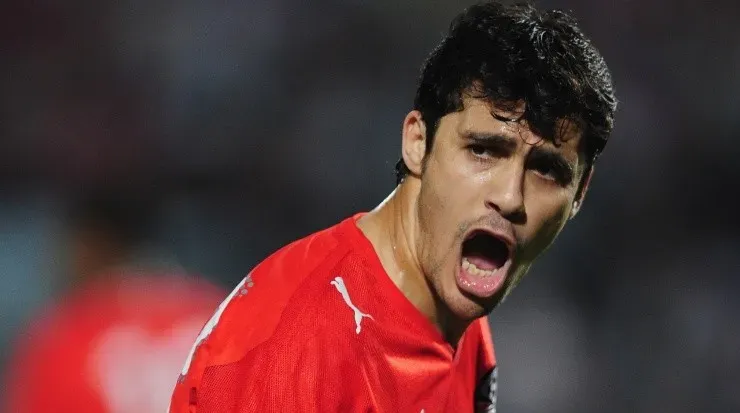
Ahmed Hassan, Egypt. (Clive Mason/Getty Images)
22. Kazuyoshi Miura – Japan
A legend of Asian and world soccer, he is the oldest player to play professionally in the sport. At the age of 55, he is still active in a third division team in Japan. He lived his glory days in the last decade of the nineties. He made 89 appearances and scored 55 goals for the Japanese national team, but incredibly he was not called up for the 1998 World Cup in France, at the height of his career. Curiously, he made his debut with Santos of Brazil, as he lived and has the nationality of that country as well.

Kazuyoshi Miura, Japan. (Masashi Hara/Getty Images)
21. David Ginola – France
In 1999, the legendary Johan Cruyff went so far as to call Ginola the best player in the world. He shone in that decade with teams such as Paris Saint Germain, Newcastle United and Tottenham Hotspur. However, he had a direct impact on France’s defeat that deprived them of attending USA 1994, and was no longer considered for the 1998 World Cup where his country won its first World Cup title.

David Ginola, France. (Clive Brunskill /Allsport)
20. Ian Rush – Wales
To mention Ian Rush is to recall the Liverpool of the eighties that won two European Cups (now Champions League), and multiple Premier Leagues, FA Cups, League Cups and Charity Shields. However, it is also to note that he had the misfortune to suffer from Wales’ lack of prominence, which deprived him of playing in a FIFA World Cup.
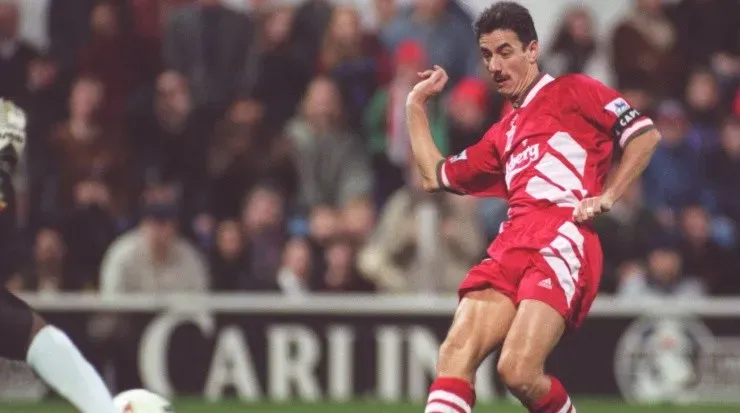
Ian Rush, Wales. (Phil Cole/ALLSPORT)
19. Bernd Schuster – Germany
A peculiar story, since he lived the pinnacle of his career in the second half of the eighties with FC Barcelona and then with Real Madrid, a period in which he was no longer considered for the Germany National Team because he resigned from it in 1983, at the age of 24, due to disagreements with the Federation, teammates and the then coach Jupp Derwall. Thus, he was not included in the only World Cup to which he could have been called up, Spain 1982.

Bernd Schuster, Germany. (Denis Doyle/Getty Images)
18.Nolberto Solano – Peru
After attending Spain 1982, Peru did not return to a FIFA World Cup until Russia 2018. Among the years of that era, Nolberto Solano shone, a footballer of great class who showed his talent in the English Premier League with teams like Newcastle United and Aston Villa. Solano suffered first-hand the eliminations for France 1998, Korea-Japan 2002, Germany 2006 and South Africa 2010.

Nolberto Solano, Peru. (Jamie McDonald/Getty Images)
17. Evaristo de Macedo – Brazil
Brazil’s mythical generation that was twice World Champion in the 1958 and 1962 World Cups could include Evaristo Macedo, a player who could sit at the same table as Pelé, Garrincha, Vavá, Zagallo and company when it comes to talent. However, his greatest sin for not being considered was playing for FC Barcelona and Real Madrid. At that time, South American National Teams did not consider European soccer as a synonym of quality, which is why Pelé never played in the Old Continent.

Evaristo Macedo, Real Madrid. (Real Madrid.com)
16. Sami Hyypia – Finland
Absolute reference of one of the saddest periods in the history of Liverpool FC, in which although they managed to win a Champions League, they fell far short in fighting on a par with the other giants of England. Hyppia was an ironclad, strong defender with a great aerial game. Unfortunately for his cause, Finland, his National Team, for whom he represented for 18 years, is still unable to qualify for the first FIFA World Cup in its history.
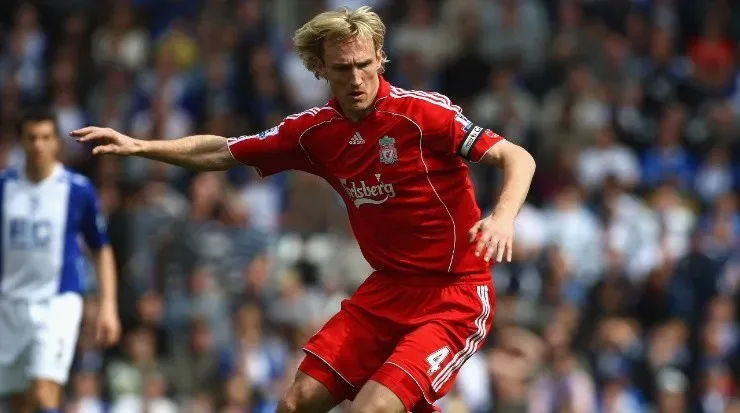
Sami Hyppia, Finland. (Clive Rose/Getty Images)
15. Frederic Kanouté – Mali
It’s simple: if Kanoute had been born in another African country, he would have had a chance to play in a FIFA World Cup, because Mali is one of the National Teams affiliated to FIFA that has never qualified for the great tournament. At club level, Frederic shone with Sevilla, establishing himself as the foreigner with the most goals in that club and the fourth best scorer in its history.

Frederic Kanoute, Mali. (Chung Sung-Jun/Getty Images)
14. Jari Litmanen – Finland
To mention that Litmanen played for Ajax, Liverpool and Barcelona should be enough to recognize the class he had. He won a Champions League with the Sons of Gods. He is arguably the best player in the history of Finland, a National Team that he failed to take to its first World Cup but where he holds the first place in appearances and is the second highest scorer.
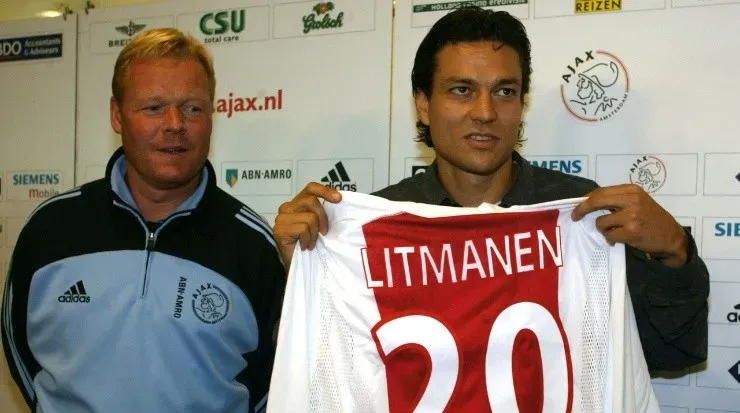
Jari Litmanen, Finland. (Michel Porro/Getty Images)
13. Tony Yeboah – Ghana
In the history of Ghanaian soccer, only Abedi Pele and Asamoah Gyan have scored more goals for the National Team. Yeboah was then an epochal scorer, who was the Bundesliga’s top scorer in two seasons with Eintracht Frankfurt. However, he failed to lead his country to its first World Cup, something that did not happen until Germany 2006, thanks to a generation led by Michael Essien, Sulley Muntari and Samuel Kuffour.

Tony Yeboah, Ghana. (Stuart Franklin /Allsport)
12. Duncan Edwards – England
A brilliant player that destiny took away from England and world soccer in general. In his time he was the youngest player to play in the English First Division at the age of 17. At the age of 19 he was called up to the Three Lions after shining in the Busby Babes of Manchester United. However, he was one of the fatalities of the Munich disaster, a plane crash suffered by the Red Devils on their return from Belgrade to Manchester.

Duncan Edwards, England. (Central Press/Getty Images)
11. Tomás Trinche Carlovich – Argentina
A true myth of Argentine soccer. Legends of the stature of Cesar Menotti, Diego Maradona have pointed him out as one of the best players they knew. Despite being considered at the time for the Argentina National Team, he was never called up. He had a memorable moment against the Albiceleste, because in a preparation match for the 1974 World Cup he played against them as part of a team of players born in Rosario. His performance was so memorable that the then coach of Argentina, Vladislao Cap, asked to be substituted for the second half, to avoid further damage to his team.
10 – Mohamed Aboutrika – Egypt
He made 100 appearances for the Egypt National Team, but was unsuccessful in the mission to help them return to a World Cup after Italy 1990. A man with a university degree in philosophy and with a humanistic and philanthropic tendency that makes him impossible to forget.

Mohamed Aboutrika, Egypt. (Junko Kimura/Getty Images)
9. Dwayne de Rosario – Canada
The Canada National Team’s gray period had one of its few bright spots in De Rosario. A player with a long career in Major League Soccer in the United States. He made 81 appearances with the Maple Leafs, but was never able to lead them to break their FIFA World Cup drought, which will be broken in Qatar 2022.
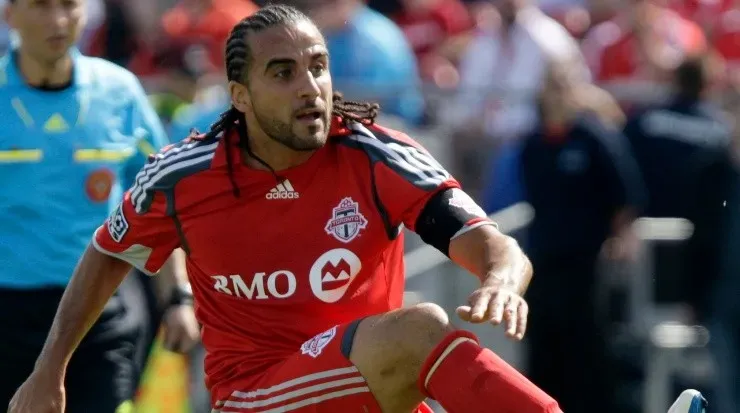
Dwayne de Rosario, Canada. (Abelimages/Getty Images)
8. Heleno de Freitas – Brazil
Before George Best made the term “bad boy” fashionable in soccer, Heleno had already carried that label for some time. He was a lethal striker who shone in Brazilian soccer, and even with the Brazilian national team, with which he scored 14goals in 18 games. His sin was to stand out in the middle of World War II, so he could not play in any FIFA World Cup. He died at the age of 39 as a result of syphilis, as his weakness for women, nightlife, alcohol, drugs and gambling was well known.

Heleno de Freitas, Brazil. (FIFA.com)
7. Arsenio Erico – Paraguay
A powerful striker who has had his fill of scoring so many goals for Independiente de Avellaneda in Argentina, a league in which he remains the top scorer in its history. A forceful, technical player with an aerial game ahead of his time, he was one of the victims of the Second World War, which deprived him of playing in a FIFA World Cup with his National Team.

Arsenio Erico, Paraguay. (FIFA)
6. Luis de la Fuente – Mexico
Many Mexican historians agree that the nicknamed Pirateis possibly the best soccer player in the history of that country… even better than the legendary Hugo Sánchez. A very strong striker, with great aerial play and exquisite technique, he was one of the first Mexicans to be signed by a European club. Controversially, he did not play in the decisive match of the qualifiers for Italy 1934, in which El Tri lost the pass to the FIFA World Cup against the USMNT, and was a victim of the Mexican withdrawal from France 1938, so he was never able to shine in the great soccer tournament.
5. Valentino Mazzola – Italy
He was ahead of his time, as he is considered one of the first and finest playmakers in the history of Italy and world soccer. He shone immensely with Venezia and Torino. However, his zenith coincided with the time of World War II when the FIFA World Cup was not played for obvious reasons. He died in the tragic plane crash that killed almost the entire Torino team in 1949, when the aircraft in which they were traveling from Lisbon crashed into one of the walls of the basilica of Superga, in the town of Turin.

Valentino Mazzola, first in standing row from left to right. (FIFA)
4. Eric Cantona – France
A world-class striker who gained notoriety for his talent but also for his irreverence and explosiveness off the field. With both Manchester United and the France National Team he sowed the seeds of success but did not see them germinate, as by 1997 he had already retired and did not enjoy the European success of Sir Alex Ferguson’s team or the 1998 French World Cup title. He was banned from the French National team in 1987 due tocontroversial statements against the then coach of Les Bleus, Henri Michel. Regarding USA 1994,he was part of the team that lost its place in the tournamentagainst Bulgaria in the European Qualifiers.

Eric Cantona, France. (Allsport UK /Allsport)
3. George Weah -Liberia
Until before Samuel Eto’o shone with FC Barcelona, there was no doubt that the best African footballer in history was the Liberian George Weah. He played for clubs such as Monaco, Paris Saint Germain and Manchester City, but he wowed the world with AC Milan, the team he played for when he won the Ballon d’Or and FIFA World Player of the Year, achievements that no other African footballer has ever achieved. With Liberia he was unable to replicate any of his success at club level. He fell one point short of a historic qualification for the 2002 Korea-Japan World Cup.

George Weah, Liberia. (Allsport/Getty Images)
2. George Best – Northern Ireland
Speed, power, skill and the ability to strike the ball with both legs, George Best is regarded as one of the greatest players in the history of the sport. He was part of the first great Manchester United team in history, alongside Denis Law and Robert Bobby Charlton. In his prime he was unable to lead Northern Ireland to a World Cup, and for his country’s return to the tournament, in Spain 1982, coach Billy Bingham decided not to include him in the roster because he was already in decline. Along with his talent, his destructive taste for alcohol, women and nightlife undermined his abilities.

George Best, Northern Ireland. (Hulton Archive/Getty Images)
1. Alfredo di Stefano – Argentina / Colombia / Spain
One of the best players in the history of the sport. Absolute legend with Real Madrid, with whom he won 5 times the European Cup (now Champions League) and multiple times the Spanish League. The Blond Arrow was a lethal striker with great individual technique, according to media reports of his time. He played for the National Teams of Argentina, Colombia and Spain, however, with none of them he was able to play a FIFA World Cup, because with the first two he played during the Second World War and with the Red Fury he played from 1957 to 1962, an era in which they only played in the World Cup in Chile. Di Stefano was in the Spanish roster for that tournament, with the number 6 jersey, but he could not play a single match due to injury.

Alfredo di Stefano, Spain. (Central Press/Getty Images)


